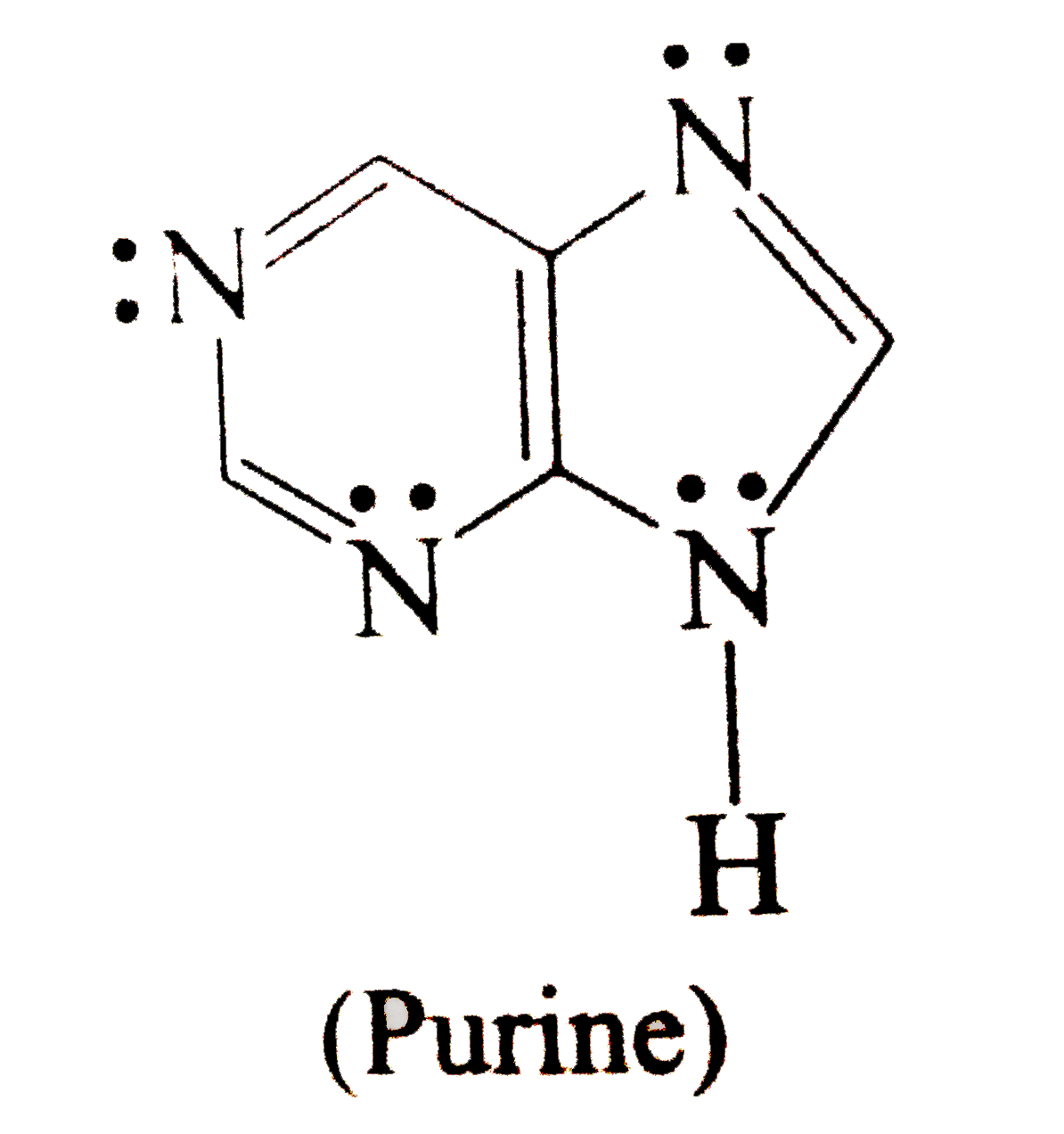The purine hetrocycle occurs mainly in the structure of DNA. Identify number of 'N' atoms having localised lone pair of electron . 
1
2
3
4
The correct Answer is:c
Step by step video, text & image solution for The purine hetrocycle occurs mainly in the structure of DNA. Identify number of 'N' atoms having localised lone pair of electron . by Chemistry experts to help you in doubts & scoring excellent marks in Class 12 exams.
Updated on:21/07/2023Topper's Solved these Questions
- BIOMOLECULES, POLYMERS, PRACTICAL ORGANIC CHEMISTRY AND CHEMISTRY IN DAILY LIFEBOOK - GRB PUBLICATIONCHAPTER - BIOMOLECULES, POLYMERS, PRACTICAL ORGANIC CHEMISTRY AND CHEMISTRY IN DAILY LIFEEXERCISE - REASONING TYPE
27 Videos
- BIOMOLECULES, POLYMERS, PRACTICAL ORGANIC CHEMISTRY AND CHEMISTRY IN DAILY LIFEBOOK - GRB PUBLICATIONCHAPTER - BIOMOLECULES, POLYMERS, PRACTICAL ORGANIC CHEMISTRY AND CHEMISTRY IN DAILY LIFEEXERCISE - MULTIPLE OBJECTIVE TYPE
72 Videos
- ALCOHOLS AND ETHERSBOOK - GRB PUBLICATIONCHAPTER - ALCOHOLS AND ETHERSEXERCISE - level 62
1 Videos
- CARBOXYLIC ACID AND DERIVATIVES, AMINES AND OTHER NITROGEN COMPOUNDSBOOK - GRB PUBLICATIONCHAPTER - CARBOXYLIC ACID AND DERIVATIVES, AMINES AND OTHER NITROGEN COMPOUNDSEXERCISE - Subjective type
19 Videos
Similar Questions
Knowledge Check
In which , central atom s has have one lone pair of electron ?
ACl2BNH3CPCl3DXeF6In NO−3 ion, the number of bond pair and lone pair of electrons on nitrogen atom are:
A2,2B3,1C1,3D4,0Total number of lone pair of electrons is XeOF4 is
A0B1C2D3
The purine heterocycle occurs commonly in the structure of DNA.
(a) How is each N atom hydridized?
(b) In what type of orbital does each lone pair on a N atom reside?
(c) How many π electrons does purine contain?
Why is purine aromatic?

View SolutionNumber of lone pair of electrons in XeF4 is
View SolutionWhich of the following does not have a lone pair of electrons
View SolutionIn NO+3 ion, number of bond pairs and lone pairs of electrons are respectively
View SolutionA lone pair of electrons in an atom implies
View Solution


